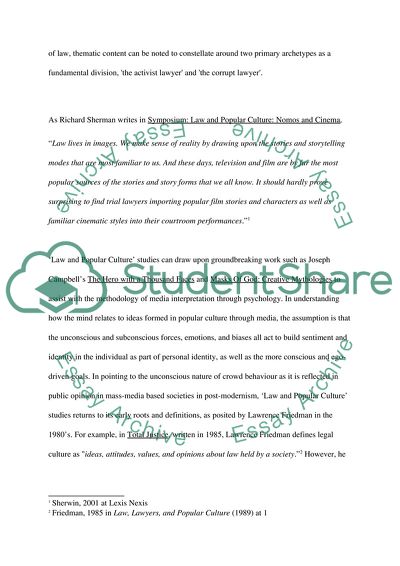Cite this document
(“Law and Popular Culture Literature review Example | Topics and Well Written Essays - 1750 words - 1”, n.d.)
Law and Popular Culture Literature review Example | Topics and Well Written Essays - 1750 words - 1. Retrieved from https://studentshare.org/social-science/1747837-how-would-you-sum-up-the-first-20-years-of-law-and-popular-culture-as-a-focus-for-scholarship-in-law-schools-and-beyond
Law and Popular Culture Literature review Example | Topics and Well Written Essays - 1750 words - 1. Retrieved from https://studentshare.org/social-science/1747837-how-would-you-sum-up-the-first-20-years-of-law-and-popular-culture-as-a-focus-for-scholarship-in-law-schools-and-beyond
(Law and Popular Culture Literature Review Example | Topics and Well Written Essays - 1750 Words - 1)
Law and Popular Culture Literature Review Example | Topics and Well Written Essays - 1750 Words - 1. https://studentshare.org/social-science/1747837-how-would-you-sum-up-the-first-20-years-of-law-and-popular-culture-as-a-focus-for-scholarship-in-law-schools-and-beyond.
Law and Popular Culture Literature Review Example | Topics and Well Written Essays - 1750 Words - 1. https://studentshare.org/social-science/1747837-how-would-you-sum-up-the-first-20-years-of-law-and-popular-culture-as-a-focus-for-scholarship-in-law-schools-and-beyond.
“Law and Popular Culture Literature Review Example | Topics and Well Written Essays - 1750 Words - 1”, n.d. https://studentshare.org/social-science/1747837-how-would-you-sum-up-the-first-20-years-of-law-and-popular-culture-as-a-focus-for-scholarship-in-law-schools-and-beyond.


